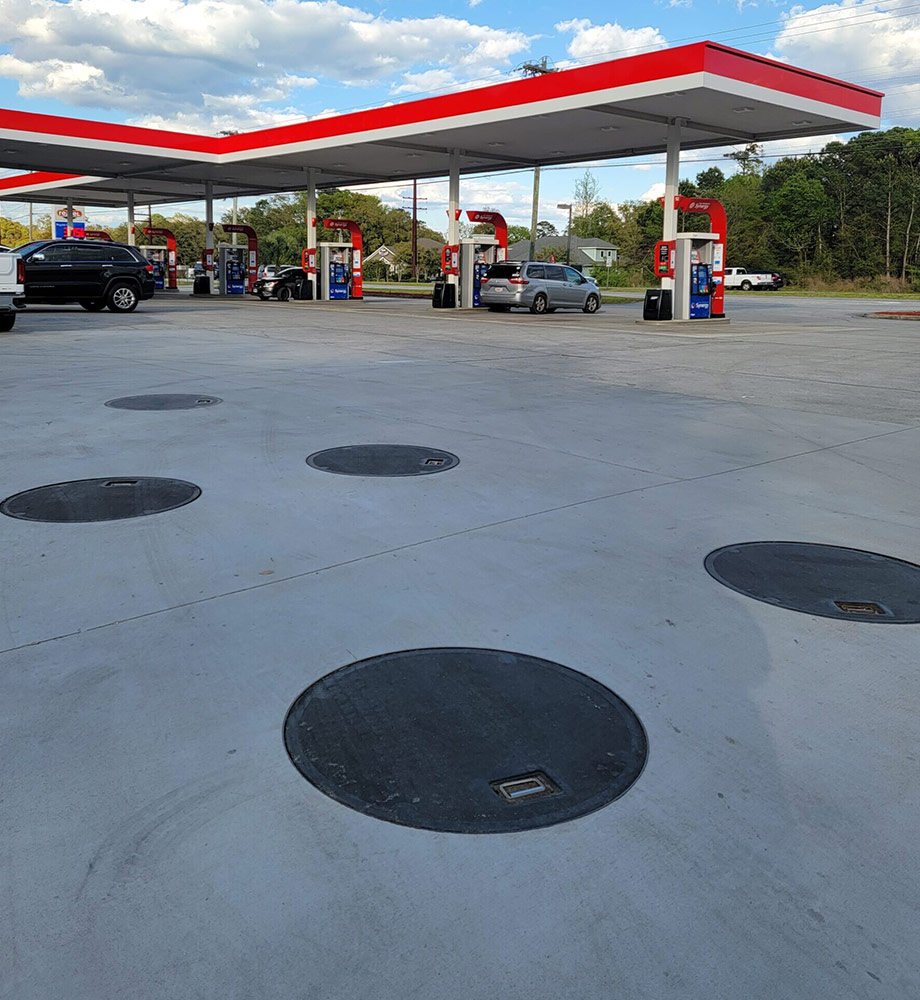Key Features
- Lightweight Construction: Composite material allows one person to lift large covers safely.
- High Load Ratings: Available in C250, D400/HS25, and up to F900 (90 ton) for heavy-duty applications.
- Corrosion & Chemical Resistance: Impervious to salt, oils, and most chemicals; will not rust or corrode.
- Non-Slip Surface: Textured or patterned top surface ensures traction even when wet.
Benefits
- Easy Access: Eliminates lifting challenges of metal covers, speeding maintenance.
- Customization: Can be molded in any color or with company logos. Gelcoat finish resists UV fading.
- Long Service Life: Unlike metal, FRP covers do not pit or require painting.
- Safety: Inherently non-conductive and can be specified fire-retardant.
Applications
- Used at wind farm substations, turbine base platforms, and along cable trenches. Ideal for sealing off service hatches (fuel sumps, irrigation valves, electrical boxes) on wind turbine pads and other renewable energy facilities.
Technical Specifications
- Typical panel thickness ~35–50 mm. Composite covers come in round or rectangular shapes in sizes from 500 mm to >1200 mm diameter or 1.2×1.2 m. Standard covers rated C250 (25 t) are ~25 mm thick; ratings up to F900 use reinforced layups and additional thickness. Flotation (positive buoyancy) can be provided for offshore use.
Unique Selling Points (USPs)
- Our composite covers are built to the “industry standard in retail fuelling”, now adapted for wind energy. They are watertight and removable without tools, preventing tampering and ingress. We offer certified covers (B125–F900) and can integrate specialized frames for custom installations. Using our FRP covers on turbine platforms or trenches significantly reduces lifting weight and corrosion issues compared to cast iron covers.

